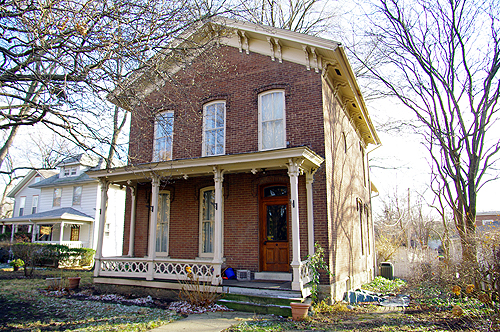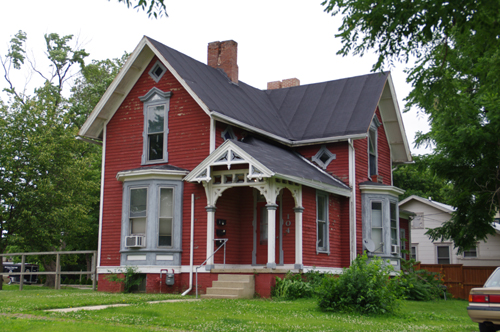Italianate, 1850s-1890s
 |  |
Derived from the English Picturesque movement, the Italianate style was a reaction to the formal classical ideals in architecture that previously found expression in the more formal Georgian and Greek Revival architectural styles. The new style was less formal and based on rambling Italian farmhouses, which were often characterized by square towers. In the United States, the style was modified and changed into a truly native interpretation. Popularized by the publications of Andrew Jackson Downing produced in the 1840s and 1850s, the style dates from 1830 through the 1880s, with most surviving examples from the period between 1855 and 1880. The financial depression of 1873 resulted in a decrease in building, and when prosperity returned, new architectural styles, particularly the Queen Anne, had supplanted the Italianate in popularity.
| |
Like the picturesque Gothic Revival style, the Italianate style emphasizes height, but without using the pointed arch element of the Gothic Revival. Instead, round or segmental arched windows were used, or tall, narrow rectangular double-hung sash windows with hoods molds that can be flat or pedimented. Generally the double-hung sash has one-over-one or two-over-two lights. Windows and doorways frequently have elaborate brick, stone, or metal hoods or label molds that follow the curve of the window or supply the arch motif above the traditional rectangular top.
| |
Buildings built in the Italianate architectural style are usually of masonry or frame construction and two or three stories in height with box-like or square massing. Roofs are characteristically low pitched, usually hipped, with wide overhanging eaves with decorative brackets; small frieze windows are also common. One-story porches are customary on residential expressions of this style, with the small entry porch the most common. Although full-width porches are frequent, many are later expansions or additions. Doors could be single or paired and usually followed the shape and treatment of the windows.
| |
Downing’s pattern books were highly detailed and showed individuals how to design a house in a particular style. While several variants of the Italiante style can be identified, the common forms and characteristics are mentioned above. | |
